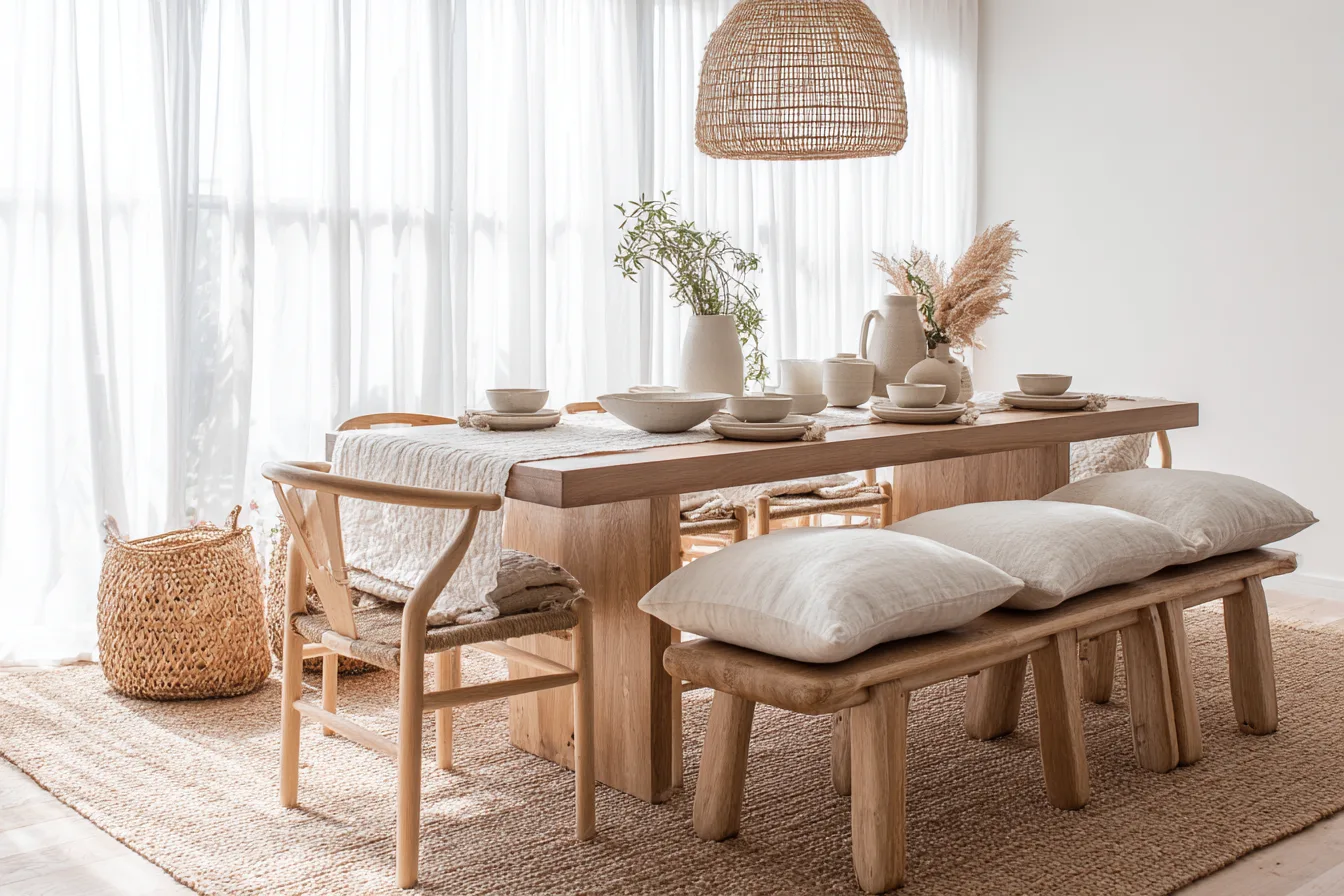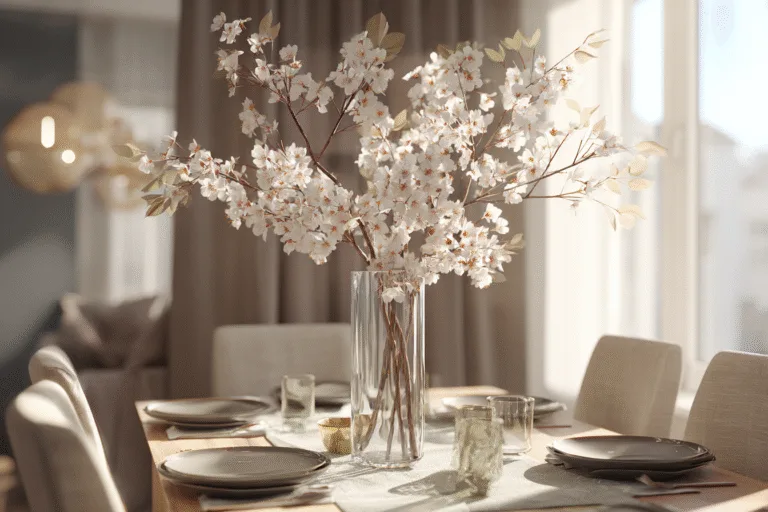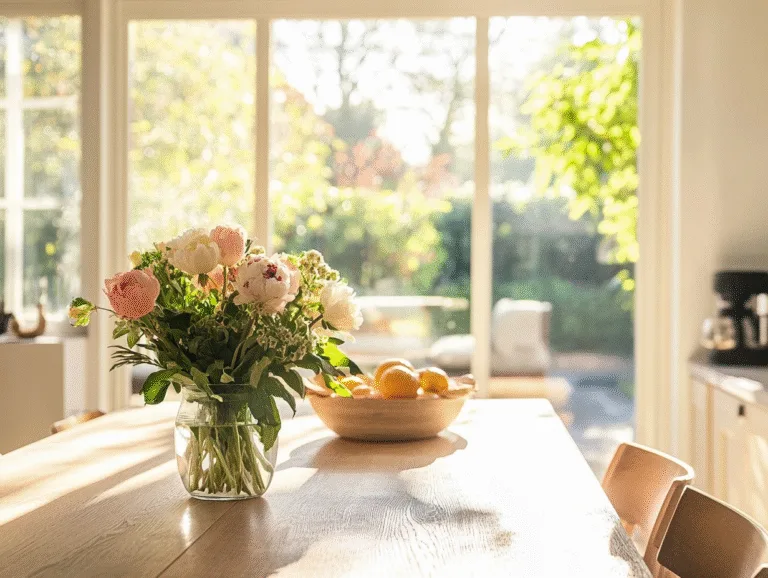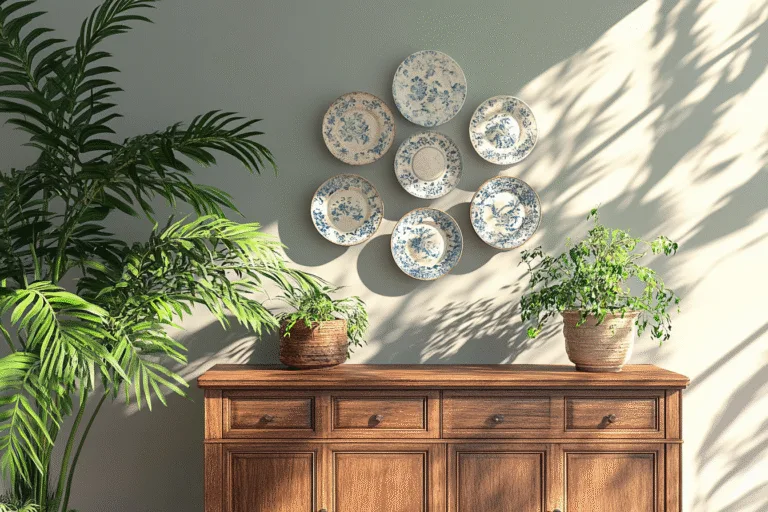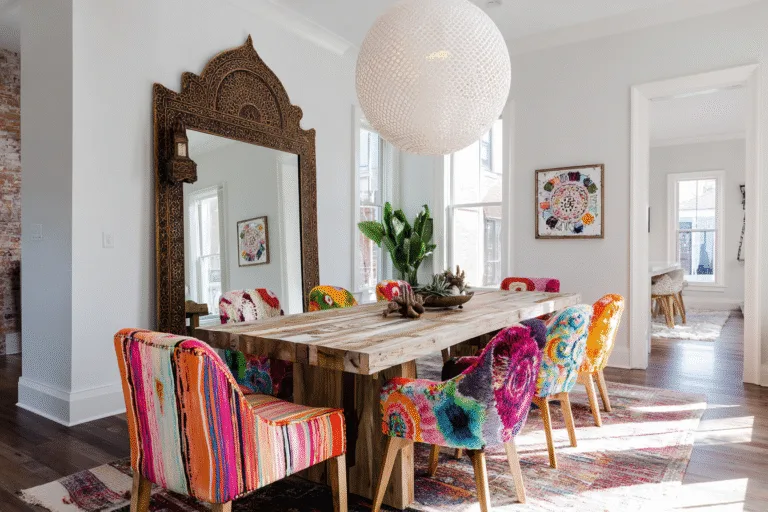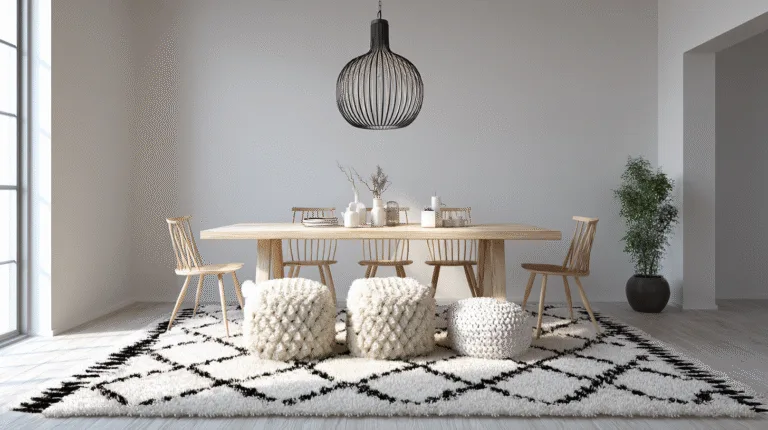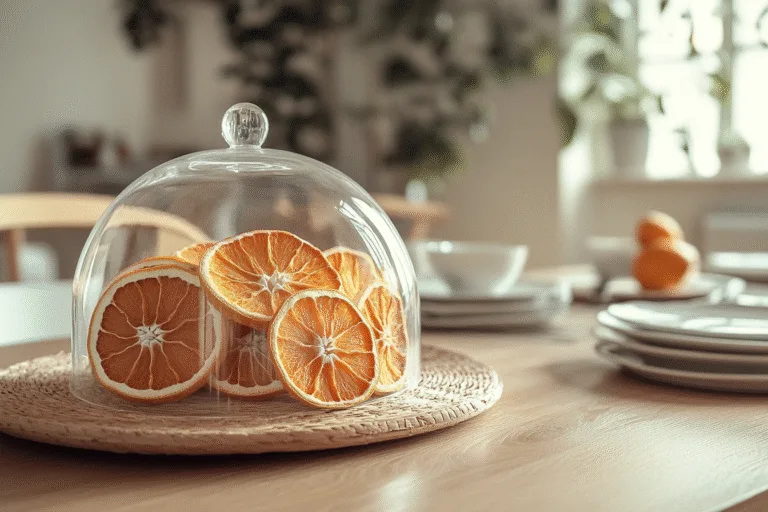18 Japandi Dining Room Ideas to Elevate Your Open Concept Space
You know that sweet spot where cozy meets clean? That’s exactly what Japandi design is all about.
It blends the minimalist charm of Japanese interiors with the warmth of Scandinavian style. And when it comes to dining rooms, especially in open concept homes, this style can totally transform the vibe.
Think uncluttered spaces, natural materials, and a sense of calm that just makes dinner feel more peaceful.
Whether you’re starting from scratch or just want to give your dining area a makeover, these Japandi dining room ideas are practical, stylish, and surprisingly easy to bring to life. Let’s get into it!
Why Japandi Works So Well in Open Concept Homes
Japandi isn’t just another buzzword; it actually solves a lot of layout headaches that come with open concept living. You want everything to flow, but still feel intentional. That’s where Japandi comes in:
- Clean lines and neutral palettes keep the space cohesive.
- Natural materials like wood and linen create texture without clutter.
- Functional furniture fits the aesthetic while keeping things practical.
So instead of your dining room feeling like it’s just floating in space, Japandi helps it feel like it truly belongs.
1. Minimalist Wooden Dining Table
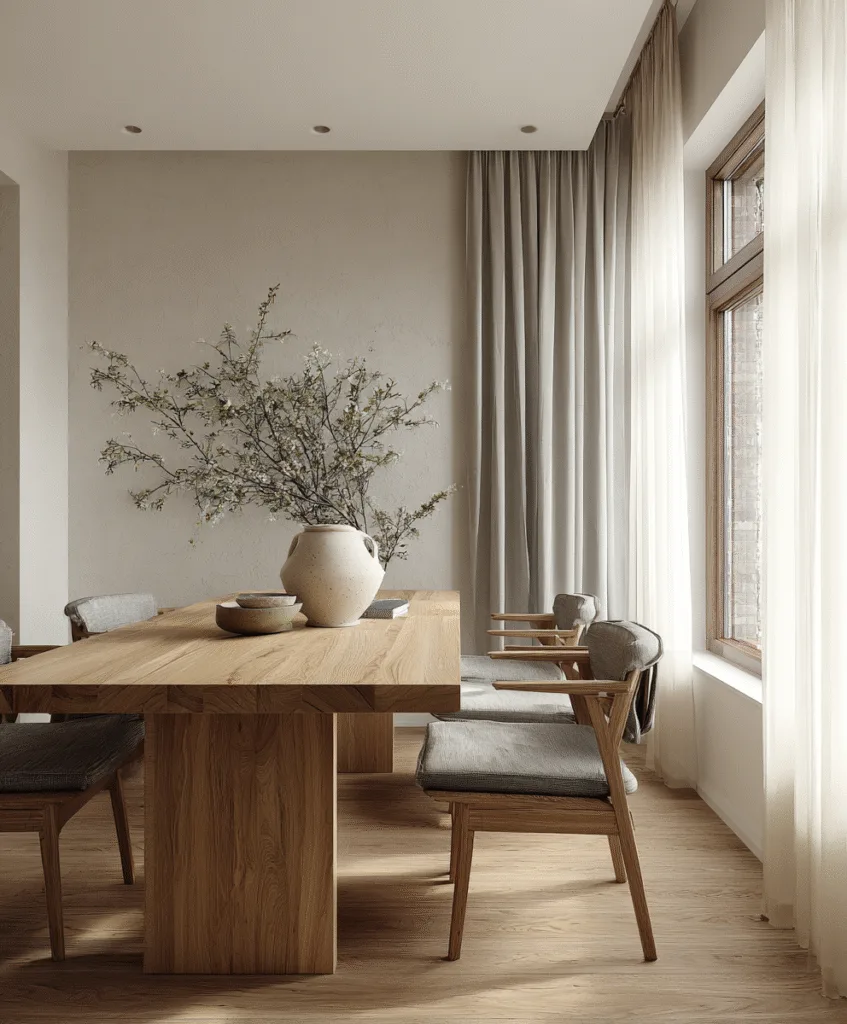
A solid wood dining table is the heart of any Japandi space. You don’t need fancy carvings or shiny finishes, simplicity is the goal here.
- Stick to light oak, ash, or walnut for that natural look.
- Go for straight, clean lines without bulky legs.
- Pair it with bench seating or low-back chairs for extra harmony.
Design Tip: Keep the table uncluttered. A single vase or ceramic bowl can be all the decor you need.
2. Soft Neutral Color Palette
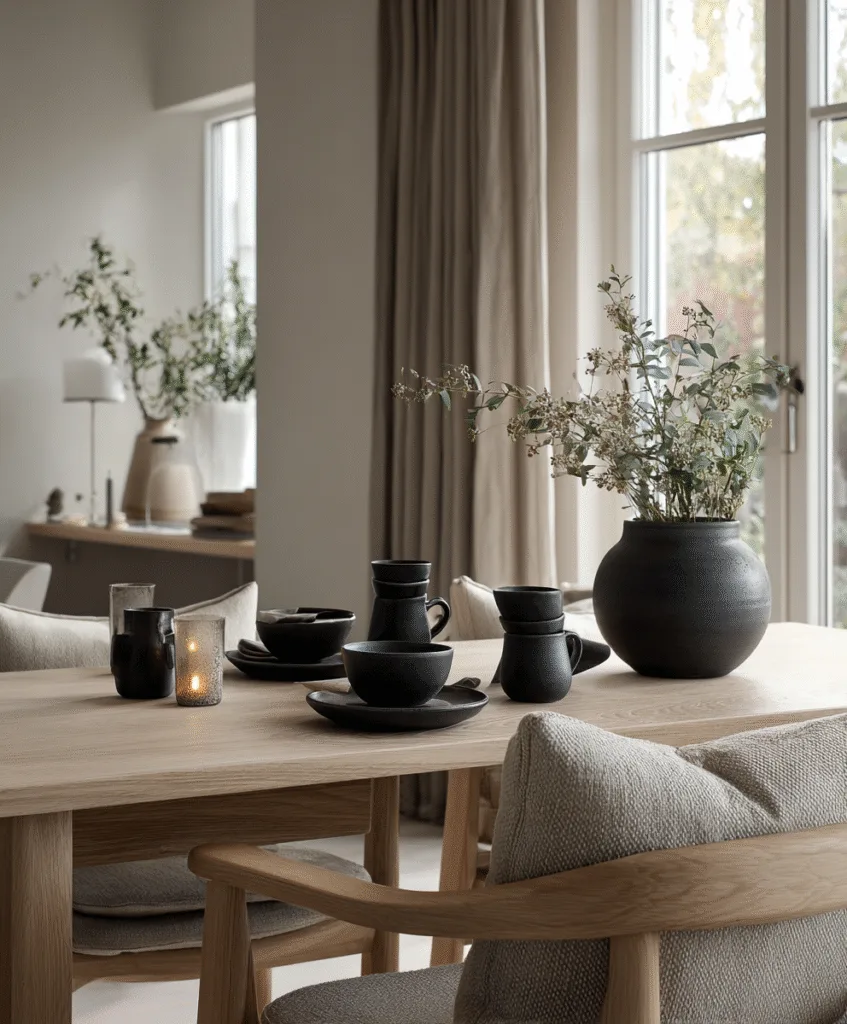
Japandi isn’t into loud colors. Instead, it leans into calming neutrals that make your dining area feel grounded.
- Use creams, taupes, beiges, and greys as base tones.
- Add subtle contrasts like charcoal cushions or matte black tableware.
- Use natural light to bring these colors to life.
Key Feature: These muted tones allow the space to feel open and serene, perfect for open layouts.
3. Low-Profile Lighting
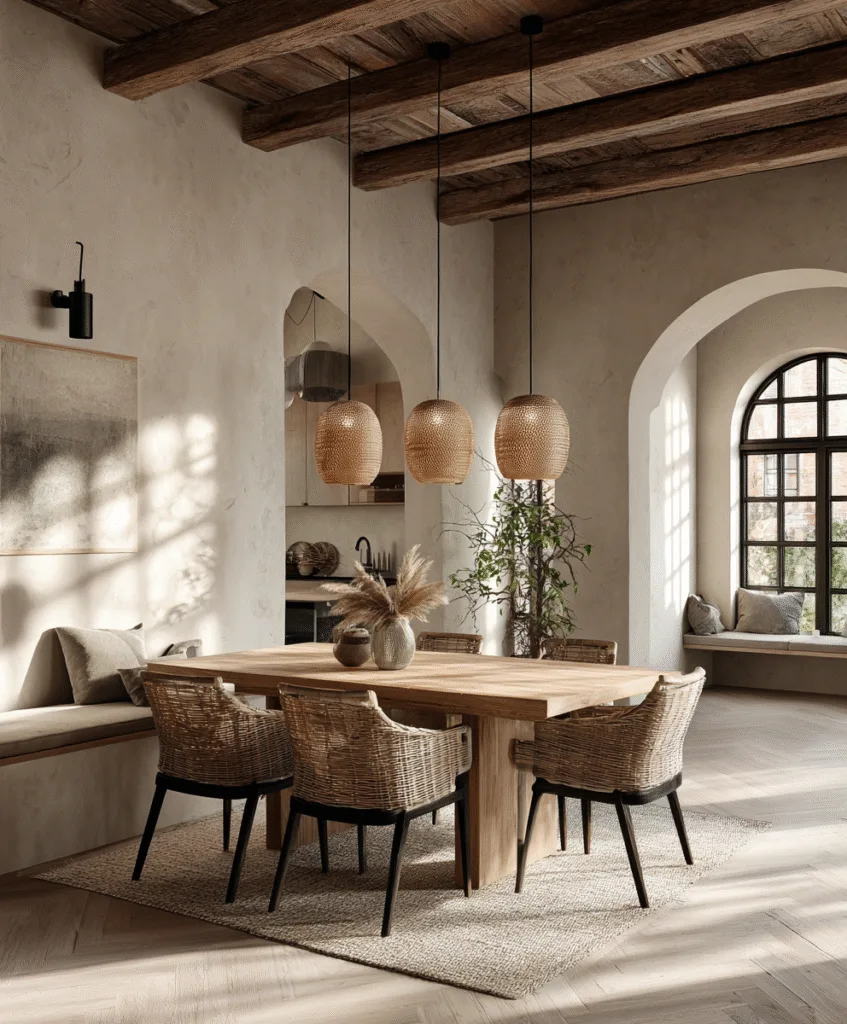
Lighting in a Japandi dining room should feel like a warm hug, subtle, not showy.
- Pendant lights in wood, paper, or matte black are ideal.
- Stick with low-hanging styles to create intimacy over the dining table.
- Warm bulbs over cool ones keep the tone cozy.
Pro Tip: Don’t forget dimmers. Being able to adjust light levels changes the entire mood.
4. Built-In Storage That Blends In
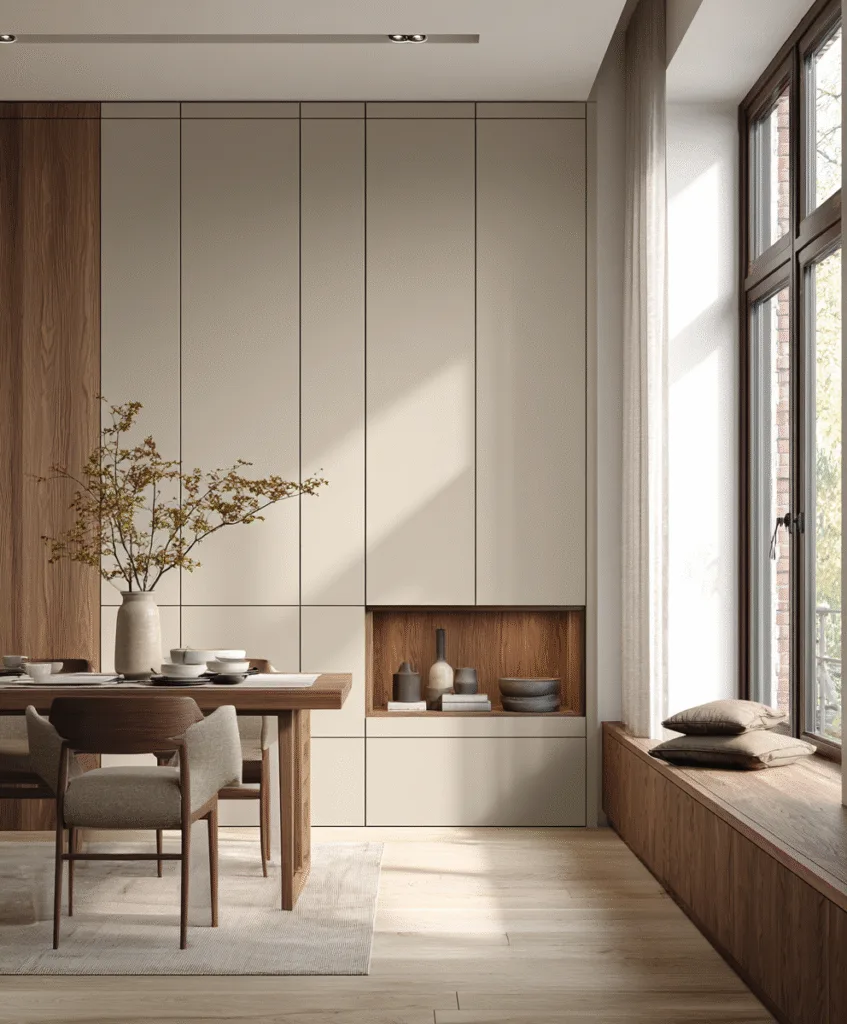
Clutter is the enemy of Japandi. But storage doesn’t have to mean bulky furniture.
- Go for built-in cabinets with clean panel doors.
- Floating sideboards keep the floor visually open.
- Choose storage in similar tones to your walls or floors so it fades into the background.
Key Takeaway: Functional design doesn’t need to be loud. Hide the mess, keep the vibe.
5. Natural Textures Everywhere
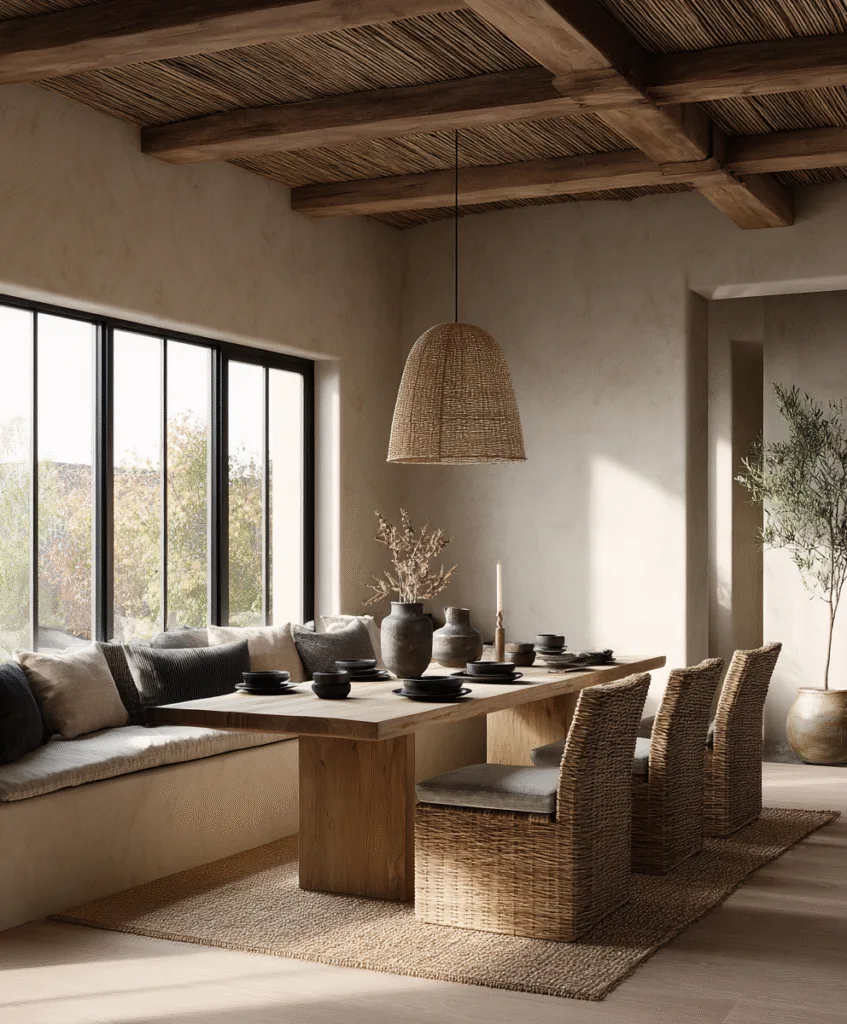
If there’s one thing Japandi loves, it’s texture. And not the fuzzy-pillow kind.
- Mix linen seat covers, jute rugs, and stoneware dishes.
- Add wicker or rattan elements like lamp shades or baskets.
- Keep fabrics lightweight and natural for that breezy feel.
Design Tip: Use layering to make the space feel lived-in, not staged.
6. Statement Wall Art (But Just One)
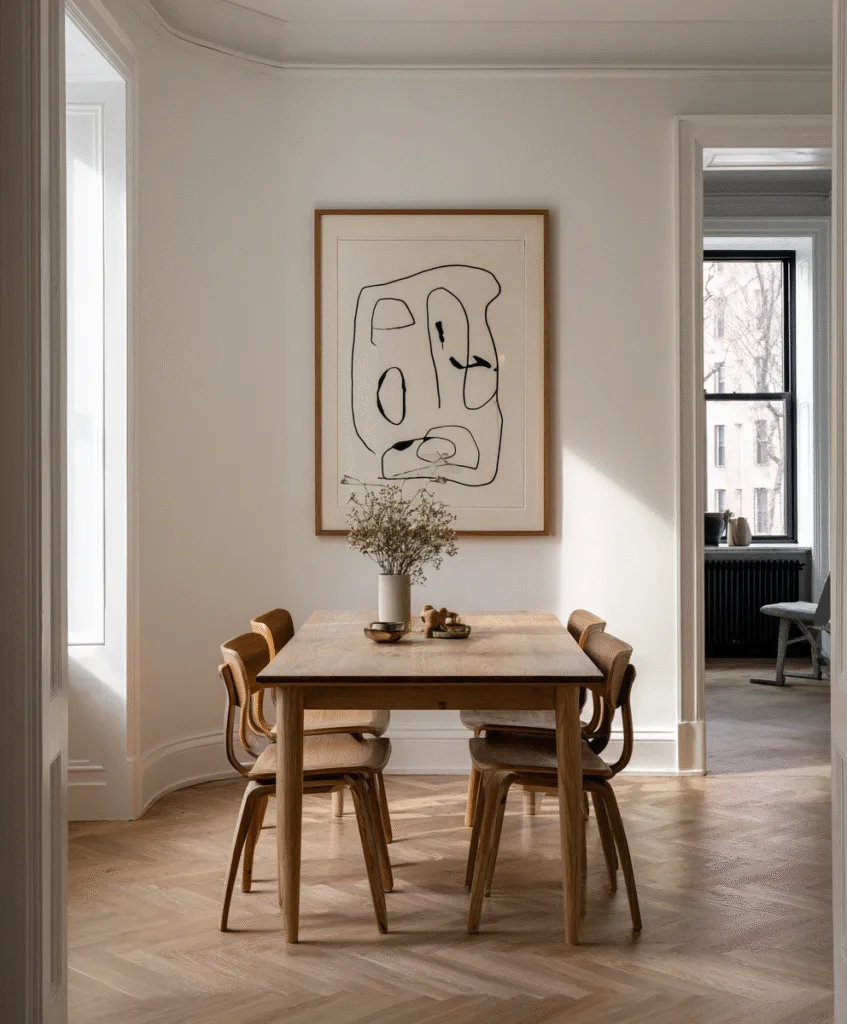
Japandi doesn’t crowd your walls with random stuff. One or two intentional art pieces can say a lot more.
- Try abstract line art or Japanese calligraphy.
- Use wood or black frames with matte finishes.
- Keep sizes moderate, nothing too tiny or overwhelming.
Important: Wall art in Japandi is about balance, not boldness.
7. Greenery (But Keep It Chill)
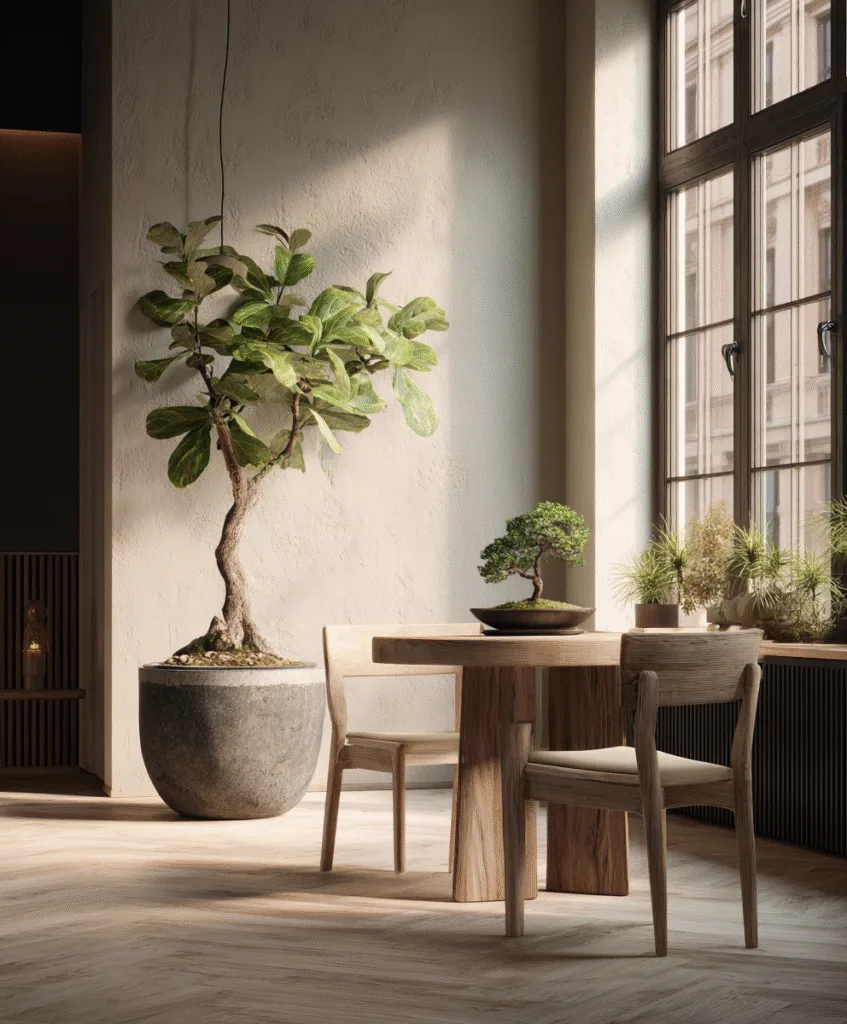
Plants are welcome, but not in jungle quantities.
- Choose one or two tall plants, like a fiddle-leaf fig or rubber tree.
- Add small tabletop plants like bonsai or snake plants.
- Avoid overly colorful flowers; keep it green and simple.
Why It Works: Plants add life and softness without distracting from the overall calm vibe.
8. Open Sight Lines to the Kitchen
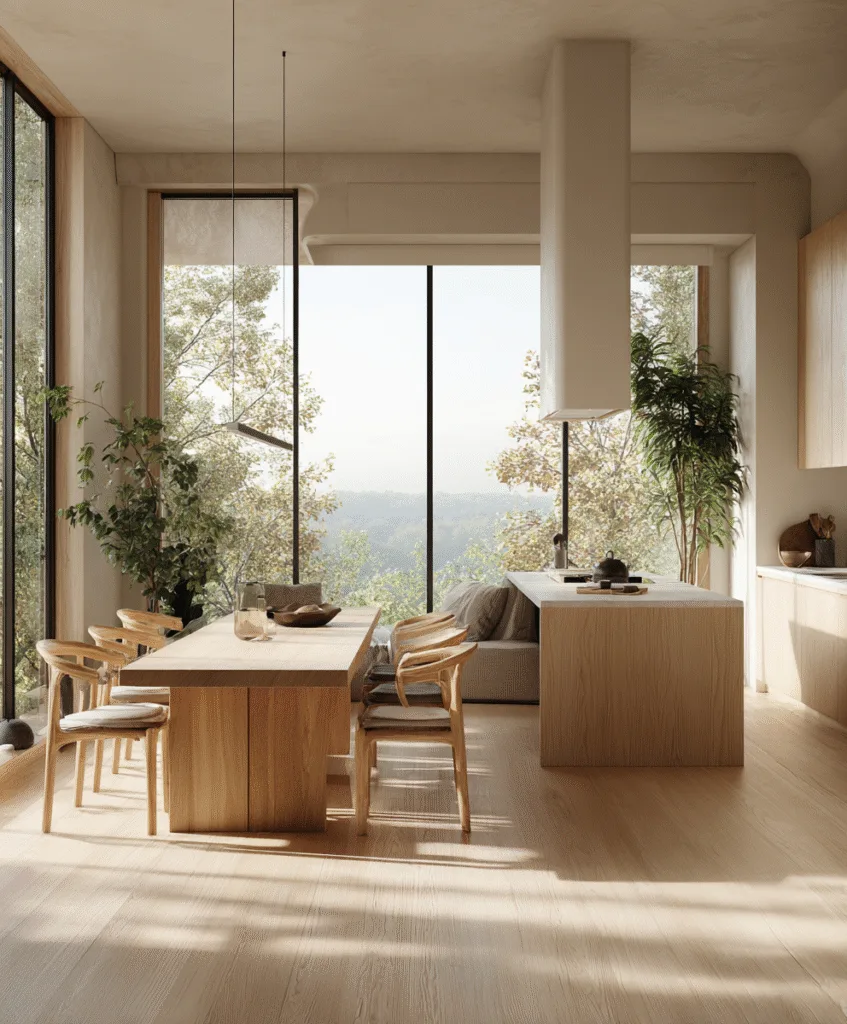
One thing I love about Japandi in open homes is how it doesn’t try to hide the kitchen, it just makes it feel part of the story.
- Use matching materials (like wooden stools or shelving) between kitchen and dining zones.
- Don’t block views with heavy dividers.
- Try a shared lighting scheme across spaces for flow.
Key Feature: Let your spaces feel connected, not chopped up.
9. Floor Seating or Tatami-Inspired Corners
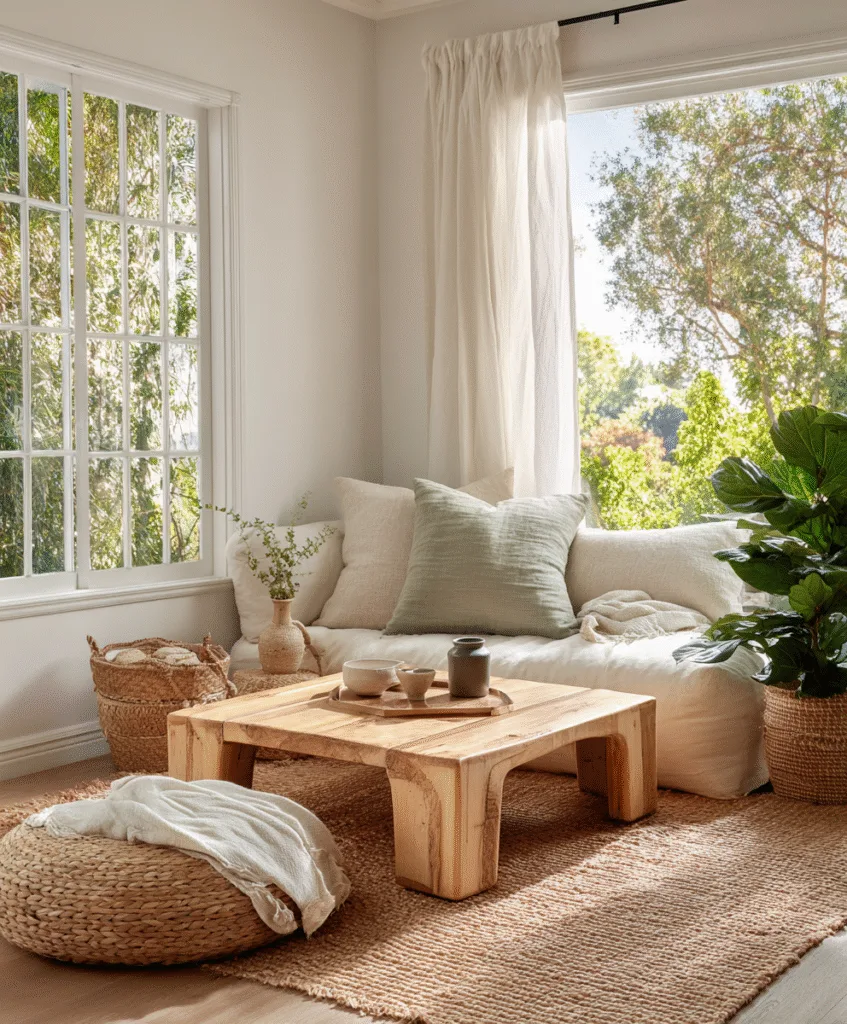
Want to really lean into the Japanese influence? Try some floor seating options.
- Use cushions and low tables for casual meals or tea time.
- Place them near a window with natural light.
- Use neutral-toned textiles to match your palette.
Why Try This: It’s perfect for small spaces or cozy nooks in larger open floor plans.
10. Blend the Dining Zone Seamlessly
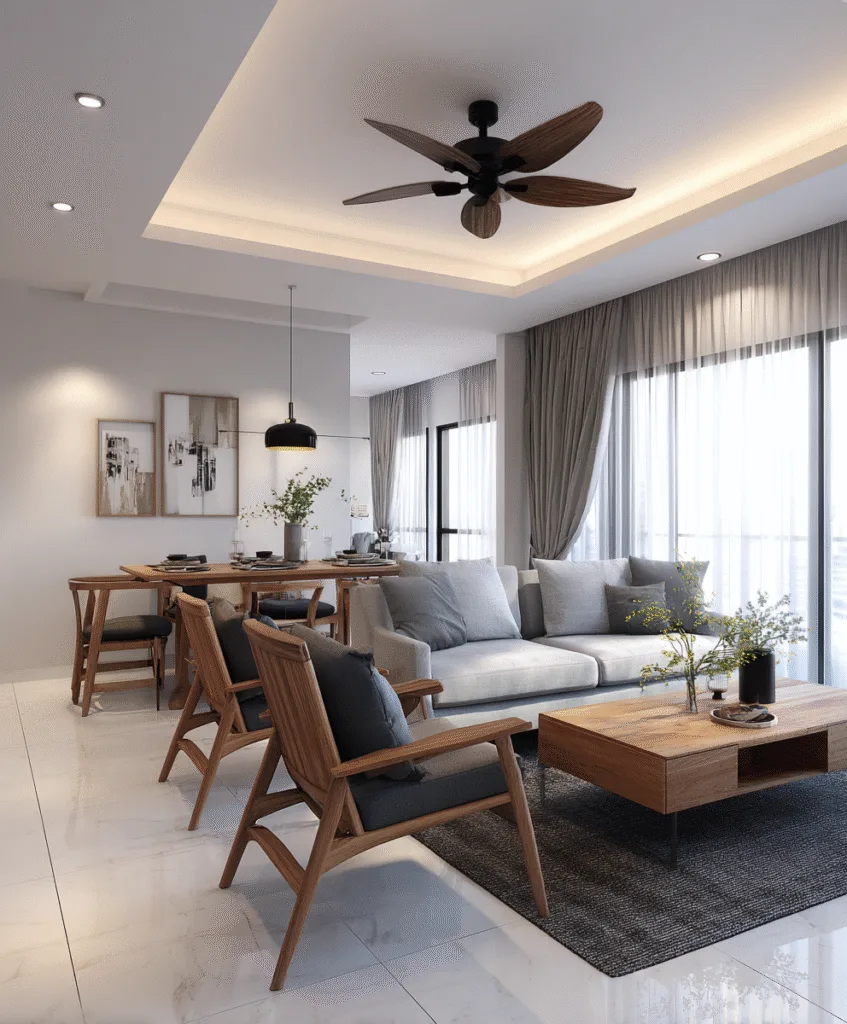
Lastly, Japandi is all about harmony. Make your dining zone feel like it flows naturally from the living space.
- Use matching flooring or rugs to connect zones.
- Keep decor minimal and color-coordinated.
- Make sure furniture heights and styles feel balanced.
Hot Tip: If something feels like it’s ‘off,’ it probably is. Japandi is intuitive like that.
11. Layered Lighting with Floor Lamps
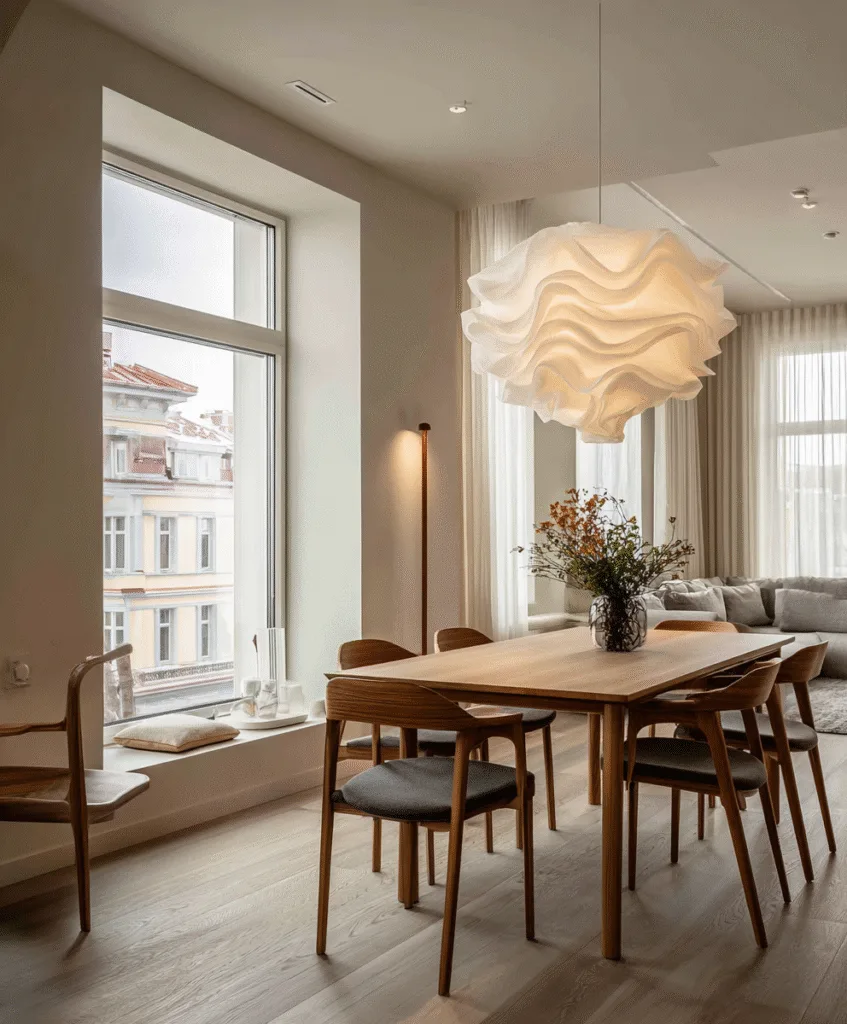
Japandi isn’t just about ceiling lights, you can build atmosphere using layered lighting.
- Use a slim wooden floor lamp in the corner to create a soft glow.
- Try paper lantern-style shades for diffused light.
- Stick with natural or neutral lampshade colors like off-white or sand.
Design Tip: Layered lighting helps you shift the vibe from daytime meals to cozy evening dinners without changing a thing in the decor.
12. Soft Rounded Furniture
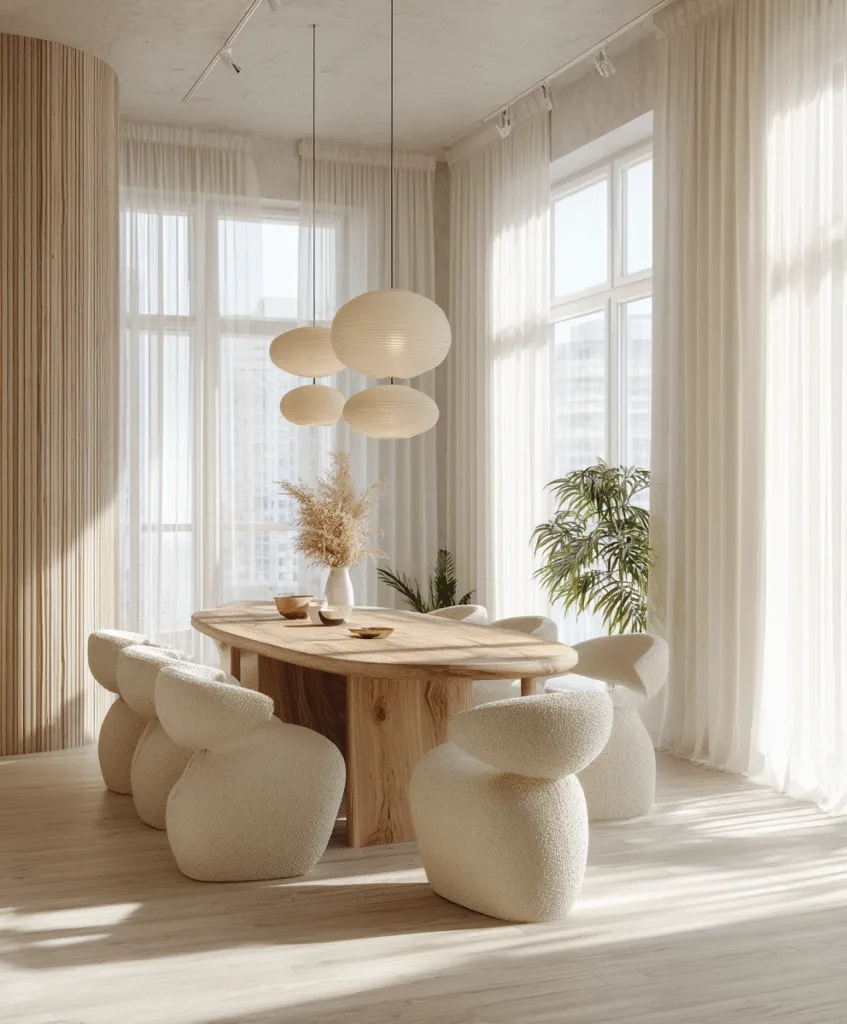
While Japandi leans minimalist, it doesn’t mean everything has to be sharp-edged.
- Incorporate round or oval dining tables for softer flow.
- Pick curved backrest chairs in natural wood.
- Avoid hard industrial edges, soft contours add warmth.
Why It Works: Rounded shapes are visually lighter and help open floor plans feel more welcoming and less rigid.
13. Shoji-Inspired Room Dividers
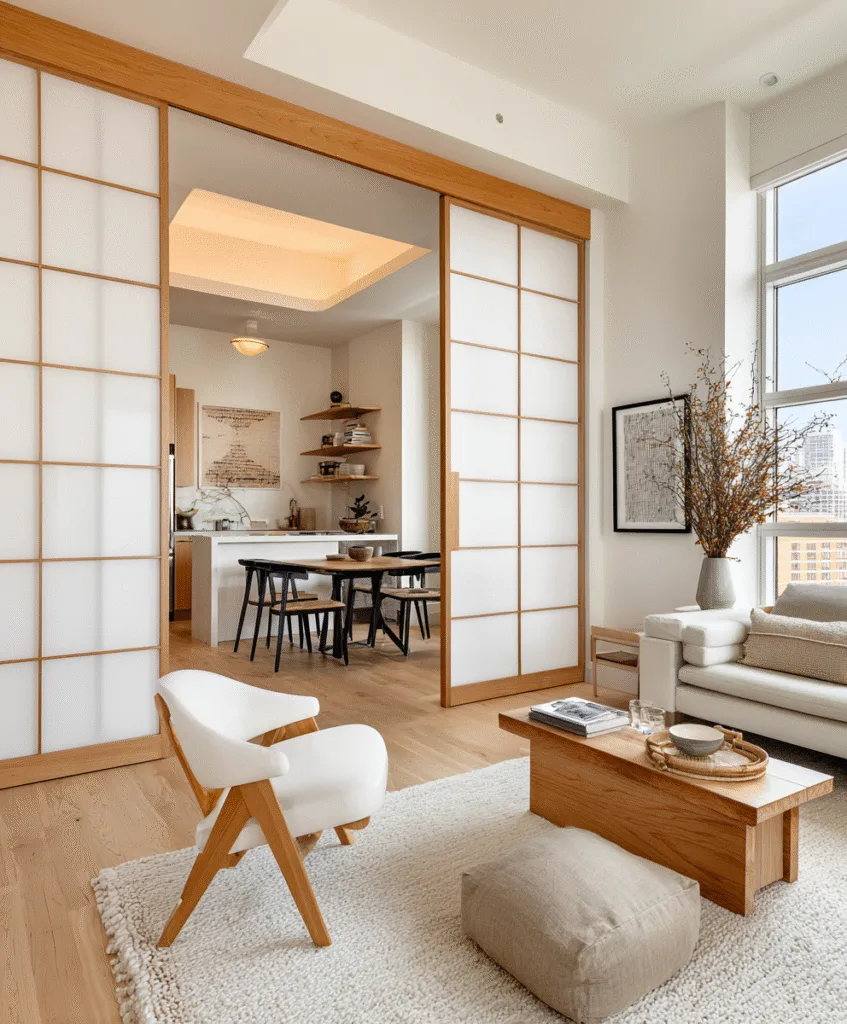
If your open concept feels too open, you can gently define the space without building walls.
- Use Shoji screen-style room dividers made of wood and rice paper.
- Choose freestanding, foldable panels for flexibility.
- Keep it simple, white or off-white panels are best.
Key Feature: These dividers offer just enough separation without ruining that airy Japandi flow.
14. Artisan Tableware Display
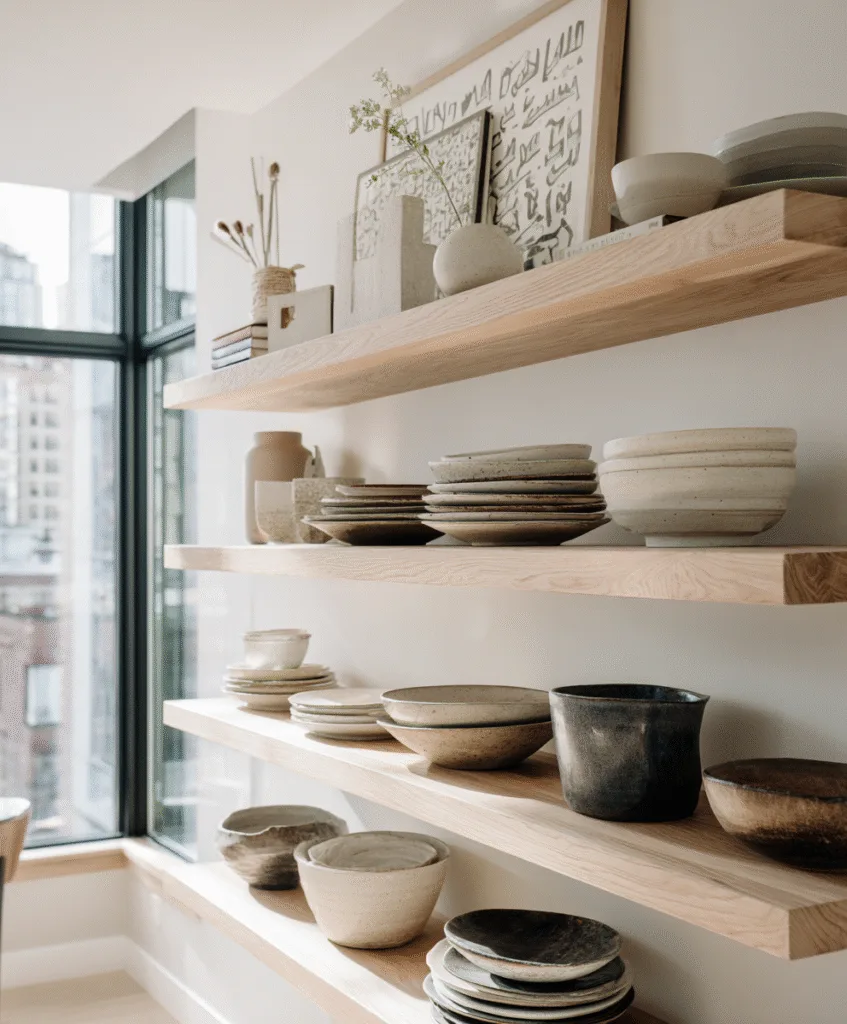
Your everyday dishes can double as decor if you curate the right set.
- Choose hand-thrown ceramics in matte glazes.
- Go for stoneware or porcelain in earthy tones.
- Display pieces on open shelving or minimal floating racks.
Hot Tip: Keep the display neat and don’t overcrowd. It’s a feature, not storage overflow.
15. Low Hanging Branches or Driftwood Decor
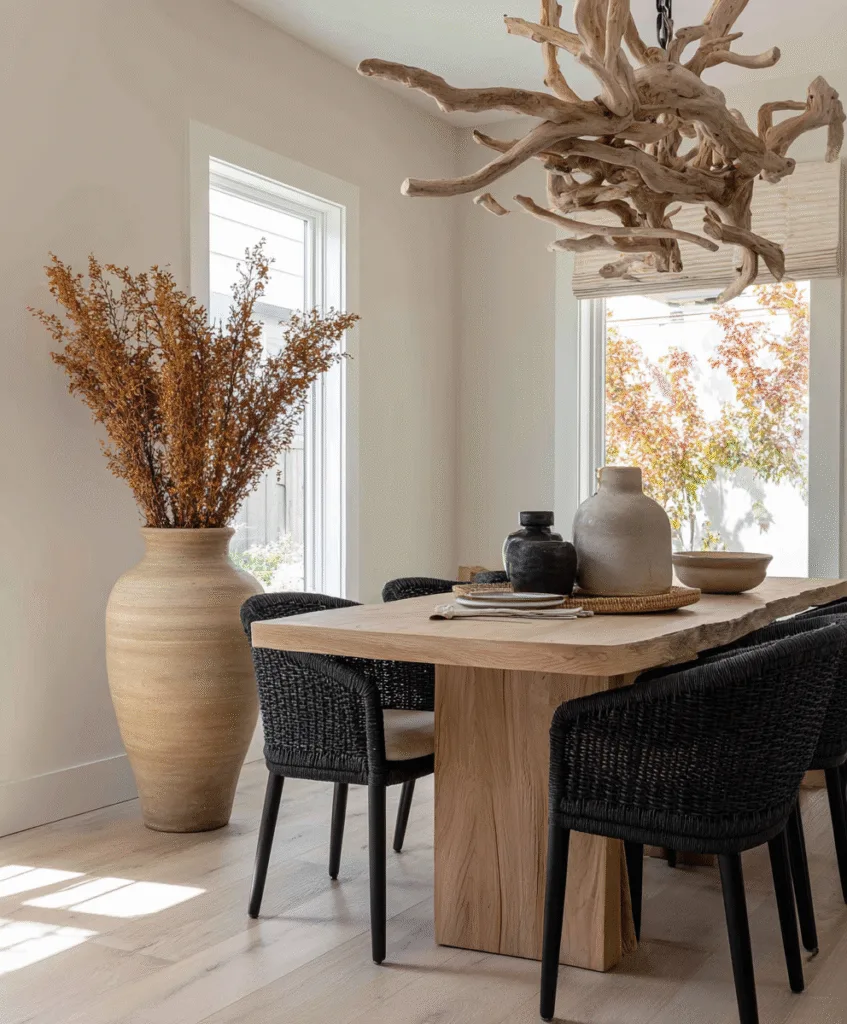
Bring a natural art piece into the dining room with zero effort.
- Use dried branches in oversized vases for a sculptural touch.
- Hang a driftwood piece as wall art or above the table.
- Stick to weathered, natural tones, no fake flowers or bright paint.
Why Add This: It adds height, texture, and an organic shape that perfectly suits Japandi’s love for the natural world.
16. Muted Two-Tone Walls
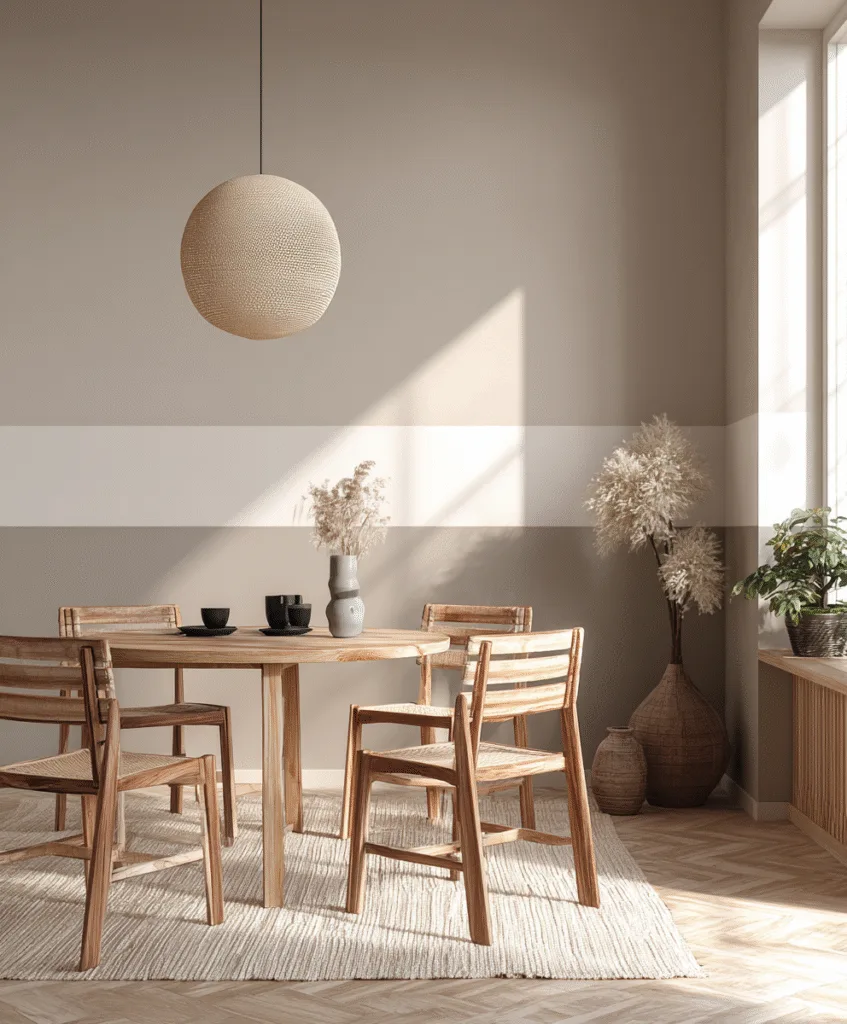
If you want a bit of contrast without breaking the calm, two-tone walls are your secret weapon.
- Use soft beige on bottom and off-white on top, or vice versa.
- Keep the division clean, tape lines or molding can help.
- Add a small color anchor, like a dark wood baseboard.
Pro Tip: Keep both tones in the same warmth family to maintain balance.
17. Textured Ceiling Accents
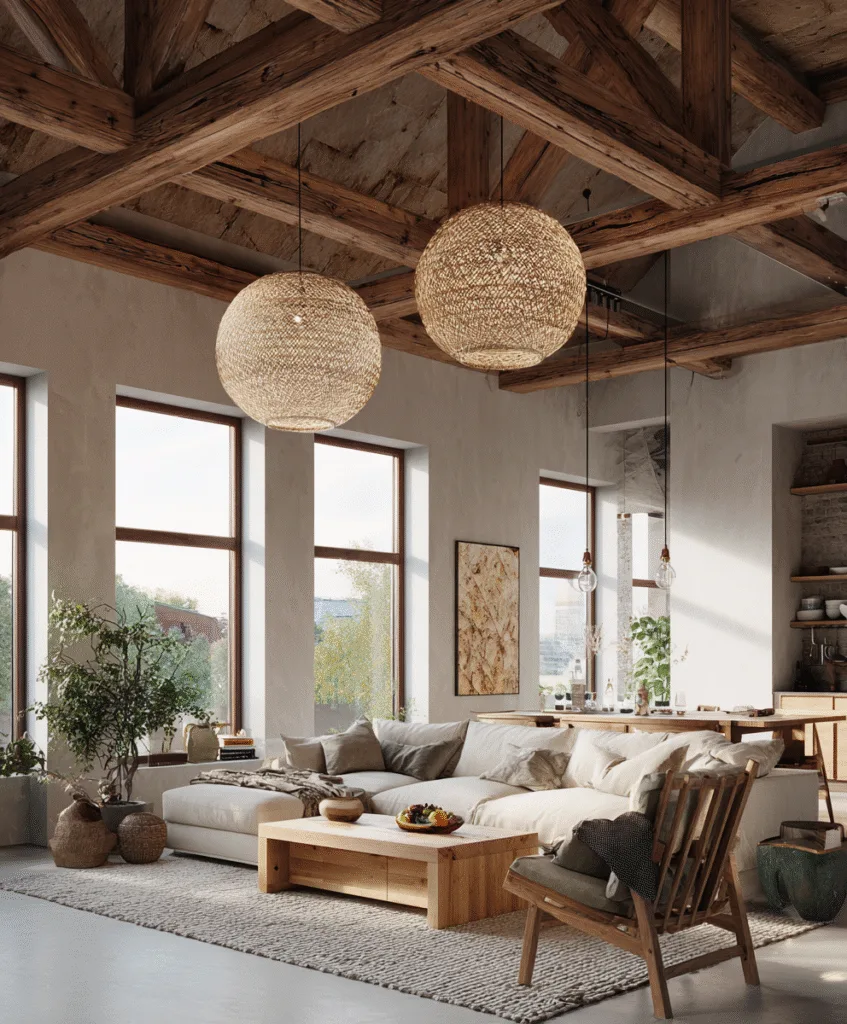
It’s easy to forget about the ceiling, but Japandi doesn’t.
- Consider wooden beams (even faux) to add visual interest overhead.
- Paint the ceiling in a very soft gray or sand tone.
- Try woven pendant lamps that create textured light patterns above.
Key Feature: The ceiling becomes part of the visual story, not just a blank backdrop.
18. Zen-Inspired Table Centerpieces
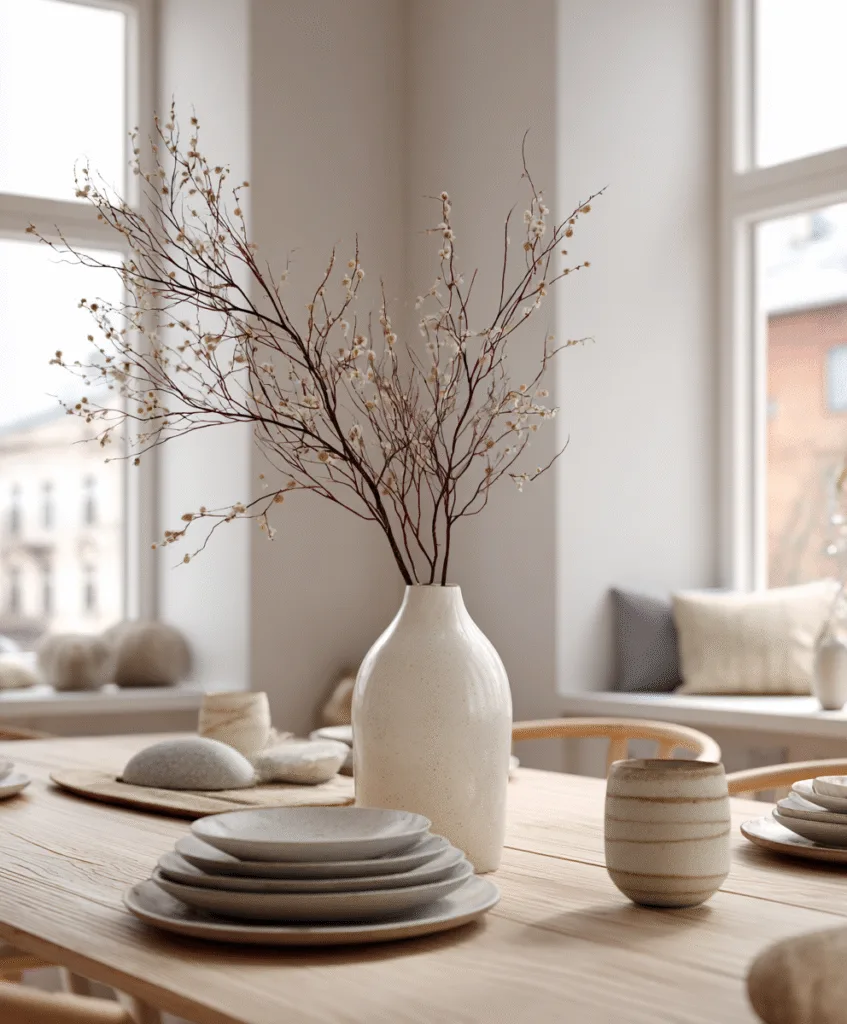
Forget over-the-top floral arrangements, Japandi goes for calm and meaningful.
- Use a single branch in a ceramic vase.
- Try stacked stones, wooden bowls, or incense holders.
- Keep it centered and low, no tall or messy centerpieces.
Design Tip: Let your centerpiece reflect simplicity and nature, just like the rest of the room.
Common Mistakes to Avoid
Japandi may look effortless, but here are a few traps to dodge:
- Too many colors: Even if they’re “neutral,” more than 3-4 tones can feel busy.
- Bulky furniture: Keep things light, clean-lined, and low-profile.
- Over-accessorizing: It kills the calm. Choose fewer, better items.
- Ignoring functionality: Every piece should do something. Style alone isn’t enough.
Remember: Less is more, but that doesn’t mean boring.
Frequently Asked Questions
What is Japandi style exactly?
Japandi is a hybrid of Japanese and Scandinavian interior styles. It blends minimalism, functionality, and natural elements for a warm yet uncluttered feel.
Is Japandi good for small dining rooms?
Yes! Because of its minimalist and space-efficient nature, Japandi is perfect for smaller open spaces. It makes rooms feel bigger and calmer.
Can I mix Japandi with other styles?
You can, but do so carefully. Japandi doesn’t play well with overly ornate or bold styles. Stick with elements that emphasize simplicity and nature.
What are the best materials for Japandi furniture?
Natural wood, stone, ceramic, linen, and matte metal finishes are ideal. These bring in texture and warmth without overwhelming the space.
How do I keep my Japandi dining space organized?
Use hidden storage, limit decor to a few key items, and stick to a consistent color palette. A clutter-free zone is key to Japandi harmony.
Final Thoughts: Bring Japandi Home, One Piece at a Time
You don’t need to remodel your entire space to get that Japandi vibe. Start small, swap out chairs, clear the clutter, add a calm color scheme.
It’s a journey toward peaceful, intentional living, and your dining area is the perfect place to begin.
Whether you’re working with a big open-concept layout or just a cozy dining corner, there’s a Japandi idea here that can help bring a little more calm into your chaos.
And trust me, once you feel that vibe during dinner, you won’t go back.

